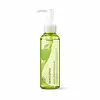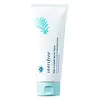What's inside
What's inside
 Benefits
Benefits

 Concerns
Concerns

 Ingredients Side-by-side
Ingredients Side-by-side

Cetyl Ethylhexanoate
EmollientIsopropyl Palmitate
EmollientTriethylhexanoin
MaskingCaprylic/Capric Triglyceride
MaskingPolyglyceryl-6 Dicaprate
EmulsifyingCocos Nucifera Oil
MaskingPolyglyceryl-10 Diisostearate
EmulsifyingDiisostearyl Malate
EmollientPolyglyceryl-6 Caprylate
EmulsifyingParfum
MaskingWater
Skin ConditioningCoco-Caprylate/Caprate
EmollientPyrus Malus Seed Oil
EmollientPyrus Malus Fruit Extract
Skin ConditioningButylene Glycol
Humectant1,2-Hexanediol
Skin ConditioningCetyl Ethylhexanoate, Isopropyl Palmitate, Triethylhexanoin, Caprylic/Capric Triglyceride, Polyglyceryl-6 Dicaprate, Cocos Nucifera Oil, Polyglyceryl-10 Diisostearate, Diisostearyl Malate, Polyglyceryl-6 Caprylate, Parfum, Water, Coco-Caprylate/Caprate, Pyrus Malus Seed Oil, Pyrus Malus Fruit Extract, Butylene Glycol, 1,2-Hexanediol
Water
Skin ConditioningGlycerin
HumectantMyristic Acid
CleansingLauric Acid
CleansingPotassium Hydroxide
BufferingStearic Acid
CleansingLauryl Hydroxysultaine
CleansingGlyceryl Stearate
EmollientGlycol Distearate
EmollientPalmitic Acid
EmollientTorreya Nucifera Seed Oil
EmollientParfum
MaskingAcrylates/C10-30 Alkyl Acrylate Crosspolymer
Emulsion StabilisingSalix Alba Bark Extract
AstringentMenthol
MaskingLimonene
PerfumingDisodium EDTA
Linalool
PerfumingDextrin
AbsorbentTheobroma Cacao Extract
Skin ConditioningRosa Centifolia Flower Extract
AstringentWater, Glycerin, Myristic Acid, Lauric Acid, Potassium Hydroxide, Stearic Acid, Lauryl Hydroxysultaine, Glyceryl Stearate, Glycol Distearate, Palmitic Acid, Torreya Nucifera Seed Oil, Parfum, Acrylates/C10-30 Alkyl Acrylate Crosspolymer, Salix Alba Bark Extract, Menthol, Limonene, Disodium EDTA, Linalool, Dextrin, Theobroma Cacao Extract, Rosa Centifolia Flower Extract
Ingredients Explained
These ingredients are found in both products.
Ingredients higher up in an ingredient list are typically present in a larger amount.
Parfum is a catch-all term for an ingredient or more that is used to give a scent to products.
Also called "fragrance", this ingredient can be a blend of hundreds of chemicals or plant oils. This means every product with "fragrance" or "parfum" in the ingredients list is a different mixture.
For instance, Habanolide is a proprietary trade name for a specific aroma chemical. When used as a fragrance ingredient in cosmetics, most aroma chemicals fall under the broad labeling category of “FRAGRANCE” or “PARFUM” according to EU and US regulations.
The term 'parfum' or 'fragrance' is not regulated in many countries. In many cases, it is up to the brand to define this term.
For instance, many brands choose to label themselves as "fragrance-free" because they are not using synthetic fragrances. However, their products may still contain ingredients such as essential oils that are considered a fragrance by INCI standards.
One example is Calendula flower extract. Calendula is an essential oil that still imparts a scent or 'fragrance'.
Depending on the blend, the ingredients in the mixture can cause allergies and sensitivities on the skin. Some ingredients that are known EU allergens include linalool and citronellol.
Parfum can also be used to mask or cover an unpleasant scent.
The bottom line is: not all fragrances/parfum/ingredients are created equally. If you are worried about fragrances, we recommend taking a closer look at an ingredient. And of course, we always recommend speaking with a professional.
Learn more about ParfumWater. It's the most common cosmetic ingredient of all. You'll usually see it at the top of ingredient lists, meaning that it makes up the largest part of the product.
So why is it so popular? Water most often acts as a solvent - this means that it helps dissolve other ingredients into the formulation.
You'll also recognize water as that liquid we all need to stay alive. If you see this, drink a glass of water. Stay hydrated!
Learn more about Water